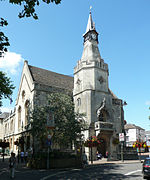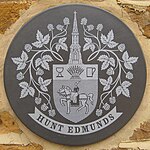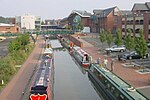St John the Evangelist Church, Banbury
1835 establishments in England19th-century Roman Catholic church buildings in the United KingdomBanburyGothic Revival architecture in OxfordshireGothic Revival church buildings in England ... and 5 more
Grade II listed Roman Catholic churches in EnglandGrade II listed churches in OxfordshireReligious organizations established in 1835Roman Catholic churches completed in 1838Roman Catholic churches in Oxfordshire

St John the Evangelist Church is a Roman Catholic parish church in Banbury, Oxfordshire, England. It was built from 1835 to 1838 in the Gothic Revival style with parts of it designed by Augustus Pugin. It is located on the corner of South Bar Street and Dashwood Road south of the town centre. It is a Grade II listed building.
Excerpt from the Wikipedia article St John the Evangelist Church, Banbury (License: CC BY-SA 3.0, Authors, Images).St John the Evangelist Church, Banbury
South Bar Street, Cherwell District Calthorpe
Geographical coordinates (GPS) Address Website External links Nearby Places Show on map
Geographical coordinates (GPS)
| Latitude | Longitude |
|---|---|
| N 52.058 ° | E -1.3397 ° |
Address
Saint John the Evangelist
South Bar Street 25
OX16 9AF Cherwell District, Calthorpe
England, United Kingdom
Open on Google Maps







